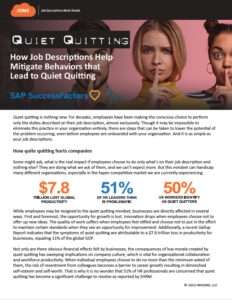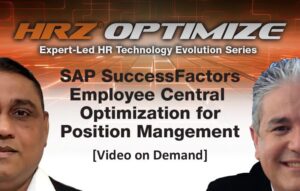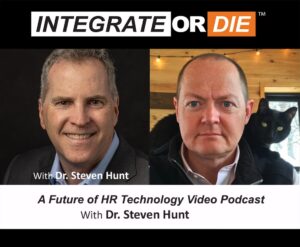 I’m a realistic optimist. This plays well in my role as a project manager.
I’m a realistic optimist. This plays well in my role as a project manager.
It plays particularly well in my project manager implementing SaaS (Software as a Service/Cloud) applications—both as a client and now a service provider. Yet, as optimistic as I’d like to be—and after years of implementing SaaS products—I’ve identified five important SaaS Implementation Risks to be recognized and managed.
Yes, I know, every project is “unique/distinct” by simply being a project! Yet I’ve found the SaaS implementation projects that I’ve worked on over the years, which have experienced delays, have realized one or more of these five risks.
And now, in order to try and decrease the probability of these risks in SaaS implementation projects, I’m sharing them with you in hopes that SaaS Executive Sponsors and implementing leadership will preemptively manage these risks thereby helping their investment be realized on time and on budget and with enthusiastic adoption of these wonderful SaaS solutions.
Before we get started…a word? Technology. People.
Okay, that is two words. The point of the matter is that “Technology” tends to get greater attention and the “People” side of the project is more of an afterthought. Let’s face it, technology is cool, exciting and (frankly) sexy. People…well people are complex, difficult and (frankly) a real pain in the tuches.
I’m going to focus on the people risks. You have already done a lot of due diligence, research, and hours of discernment of what technical system you were going to purchase. And if you landed on SAP and its SuccessFactors product, you did well. Ah, but the people part…that usually doesn’t get as much attention, discernment, and proactive risk management. I’d like to call your attention to the people risks.
My top five SaaS implementation risks are:
- Procurement to Implementation Buy In
- Decision making
- PMs and PMOs
- New/Different: First Time for Everything
- History: The Great Influencer
Let’s take a look at these one by one. Along the way we may identify other key risks but let’s start with these.
The Beginning
“…the beginning is the most important part of any work…” Plato wrote in The Republic. Yes, he was talking about the foundations that are laid for young people and young minds but I have no problem using the kernel of this quote for project management. How a project starts when it is in both the procurement and the implementation phases is not only important but actually critical.
When I am participating in the transition of a project from our sales organization to our service delivery group I want to know who from the client side participated in the selection/procurement process. Then I want to know who is on the implementation team. And the critical question then is, “Was the client implementation team involved in the procurement of what we are about to implement?” Did the team that is about to implement agree it was necessary and that our product with its capabilities and features would solve their identified problems or offer opportunities to enhance their current situations? If not, we have identified a potential High risk at this point.
My Beginning
I cut my teeth on quality systems while participating in a conference with W. Edwards Deming in 1986. Listening to him talk about his “14 Points on Total Quality Management” was a pivotal moment in my professional life. I knew I was hearing something that was going to either challenge or empower my work world forever and I loved it! In fact, I loved it so much that I wanted to work in Quality systems from that point forward and have done so in one way or another since.
Unfortunately my first foray into the Quality world was to be named as a Statistical Process Control manager. This was a common mistake by businesses in the 1980s as many tried to implement what Dr. Deming, identified most frequently as a statistician, was saying. Thus, corporations emphasized the technical aspects of his works missing Dr. Deming’s bigger (and perhaps more passionate) points on people side of the equation. It is about the people and how they and their contributions, be they inputs and perspectives, are critical to Quality.
So, back to our new implementation project.
Was the group that is about to implement this project involved in the real beginning—in procurement? Were they consulted? Were they engaged in setting the selection criteria and making the selection? Were they given a voice on the procurement and plan to implement? The success of the project depends on this group. The success of the project depends on their commitment, their buy in, their actions, their decisions…it depends on them and they are a powerful team.
I kick off all my projects saying, “All projects are people projects…so what are these people being asked to implement?” Then and only then do I review our technical requirements. People. It is all about the people. The technology cannot implement itself. As wonderful and powerful and fantastic as the technology is…it simply can’t be implemented without the people in the project team.
Perhaps how I kick off my projects is my homage to Dr. Deming who gave unfiltered challenges to American CEOs and then spoke oh-so-respectfully to the woman or man working on the front lines. Dr. Deming knew that no quality effort or business objective was going to be successful if the people who were to implement it and work with it day by day were not respectfully involved and empowered.
Do you want your investment in your SaaS implementation to be successful? Do you want it completed on time accomplishing your business drivers? If so, my suggestion is focus on how you begin this investment and people who are involved. Like Plato said, “…the beginning is the most important part of any work…” Let’s start there.
I welcome your questions or comments. Please reach out to me through LinkedIn!
Ellen Loughrin, PMP – HRIZONS Principal Consultant & Senior Project Manager, PMO




